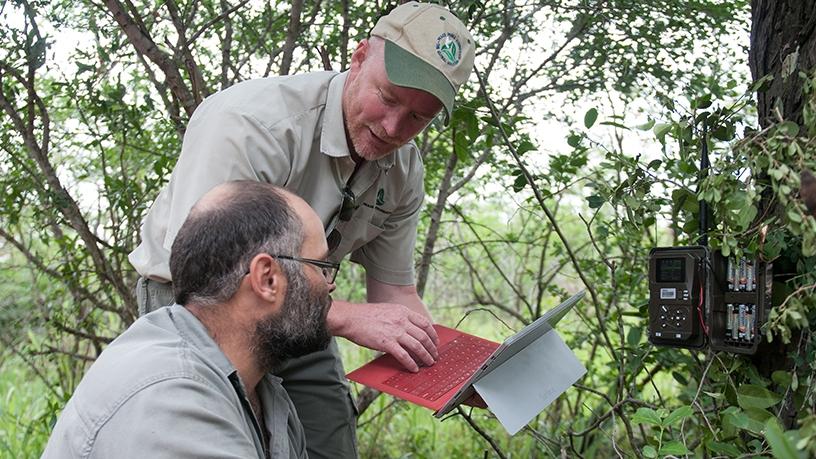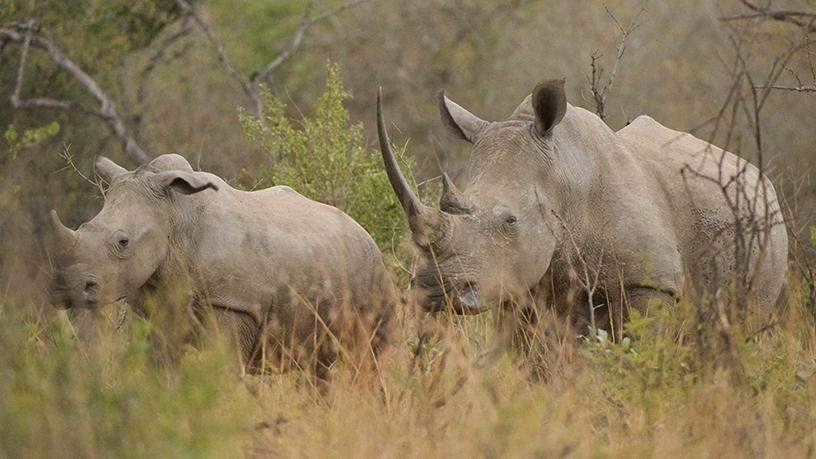
Peace Parks Foundation (PPF) is using Microsoft Azure-enabled artificial intelligence (AI) technology to help fight against the scourge of rhino poaching in South Africa.
In 2017, a total of 1 028 rhinos were poached throughout SA, only 26 less than in 2016.
In KwaZulu-Natal (KZN), conservation agency Ezemvelo KZN Wildlife - custodian of the world's second largest population of rhino - has been especially hard hit, with 222 rhinos poached across the province last year.
One of the parks affected was the Hluhluwe-iMfolozi Park (HiP), which is often referred to as the 'birthplace of rhino' as it was here the southern white rhino was saved from the brink of extinction half a century ago.
Peace Parks is a non-profit organisation involved in trans-border conservation. Transnational wildlife crime has become a key focus area for it and in partnership with Ezemvelo, and supported by various donors through the Rhino Protection Programme, it is implementing an integrated smart park technology strategy in HiP.
PPF has deployed a collection of integrated technology solutions that together create a connected environment to enable collection and consolidation of real-time data from various devices and sensors throughout the park.
Douglas Gillings, programme manager for combatting wildlife crime at PPF, says the park is using Microsoft Azure and its baked-in services, such as the AI cognitive visual service API, to assist with rapid data analysis.
There were already numerous remote motion-sensor cameras set up strategically throughout the park which captured tens of thousands of images. However, for the small team at HiP, it is impossible to manually go through these for relevant images.
"Within a period of just over three months, more than 25 000 images were received by in-field cameras. Using Azure's AI scanning capabilities, the system was able to return less than 1 300 images that were relevant in terms of potential human incursion, preventing the team from being overwhelmed by an influx of data," says Gillings.
Thecustom cognitive visual API analyses photos collected by the camera traps on movement detection and sends them to the in-house-built integration application. The API then returns a list of objects that it is able to identify in the photo, which is then evaluated by the PPF integration application.
"When it detects people and/or vehicles have been identified, the photo is posted to the command and control application used by law enforcement staff to monitor management actions in the park. This has been incredibly effective," Gillings explains.
When a possible poacher is identified an alert is sent - in the form of a picture, time and GPS location - to a select group of law enforcement staff on both their PCs and mobile phones, along with a date/time and location in order for them to confirm it is a poacher and react quickly and accurately.
PPF has been supporting Ezemvelo KZN Wildlife with various projects related to rhino conservation as part of the Rhino Protection Programme since 2014. Research into the use of technology to combat wildlife crime has been a core focus from the start.
"It was very clear from early on that there was no single solution to the problem and that the only way forward would be an integrated system approach. With the dramatic increase in rhino pressure over the past year, and following development and lessons learnt from initial pilot projects involving the testing of technology in the park, PPF and Ezemvelo decided to implement a smart park strategy in HiP," Gillings says.
Ezemvelo also launched a centrally located command and control 'nerve centre' in HiP, which acts as a hub for the aggregation and visualisation of data collected from technology systems deployed in the park, along with information provided by counter-poaching forces on the ground.
"Intelligent technology systems allow for analysis and interpretation of data, which in turns enables quick decision-making, effective tactical planning, as well as forecasting and evaluation of rhino poaching risks in the region," PPF says.
Forecasting future scenarios

The next step would be to use AI and machine learning to predict where poachers are likely to come from.
"Now that we are able to aggregate the level of data being collected and integrate with big data mechanisms, we are certainly exploring the ability of deep learning to start identifying correlated and causal relationships of both real-time collected data and key data points such as poaching 'intendents' to forecast likely scenarios," Gillings says.
He says the foundation plans to extend this successful project in other parks and "structuring the project so that it is as scalable, software-defined and agnostic of technologies as possible to simplify deployment requirements".
Gillings believes there are various potential applications of AI in the conservation space, some of which they are already exploring.
"The use of advanced technology in the conservation space is an evolving process, and we learn more and more lessons every day. Technology alone will not win this battle, but through combined efforts with the men and women on the ground, and through the technical assistance received from experts...we are confident we will be able to assist Ezemvelo in overcoming various barriers to success," Gillings adds.
Share